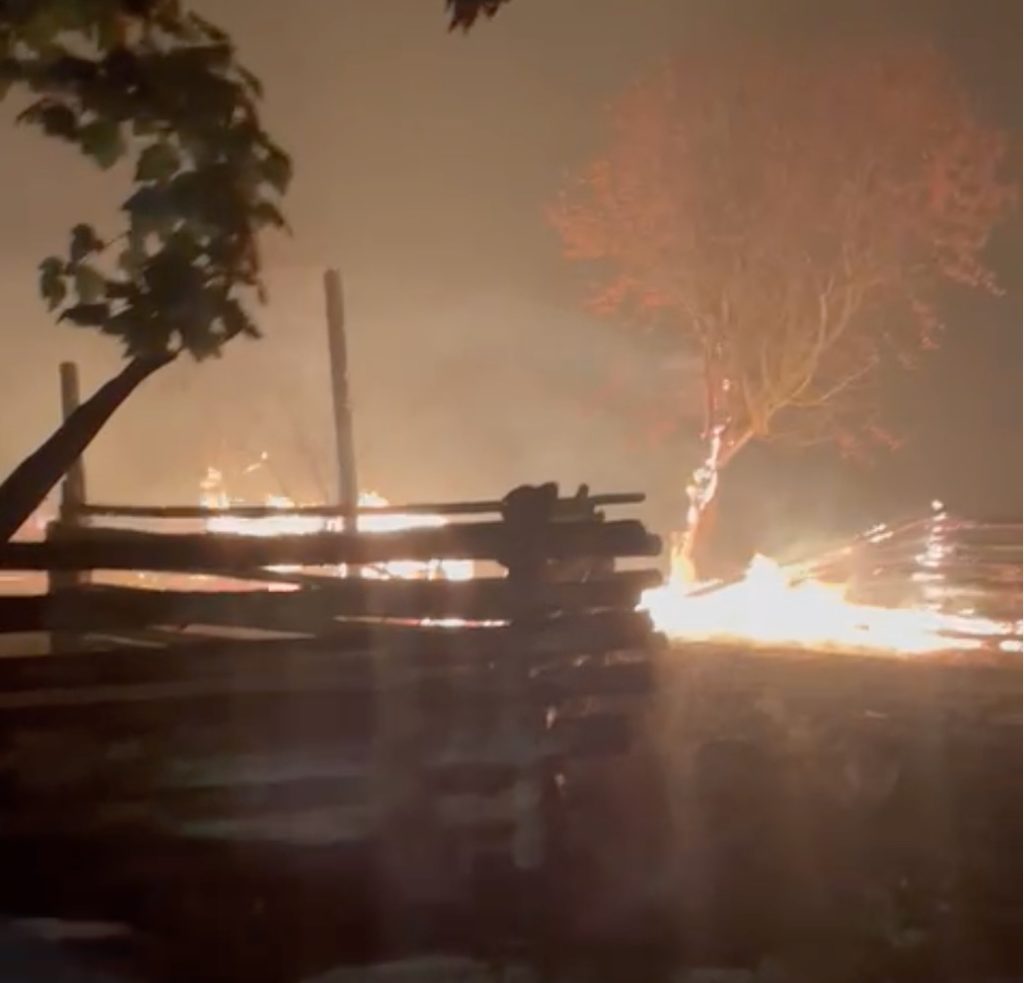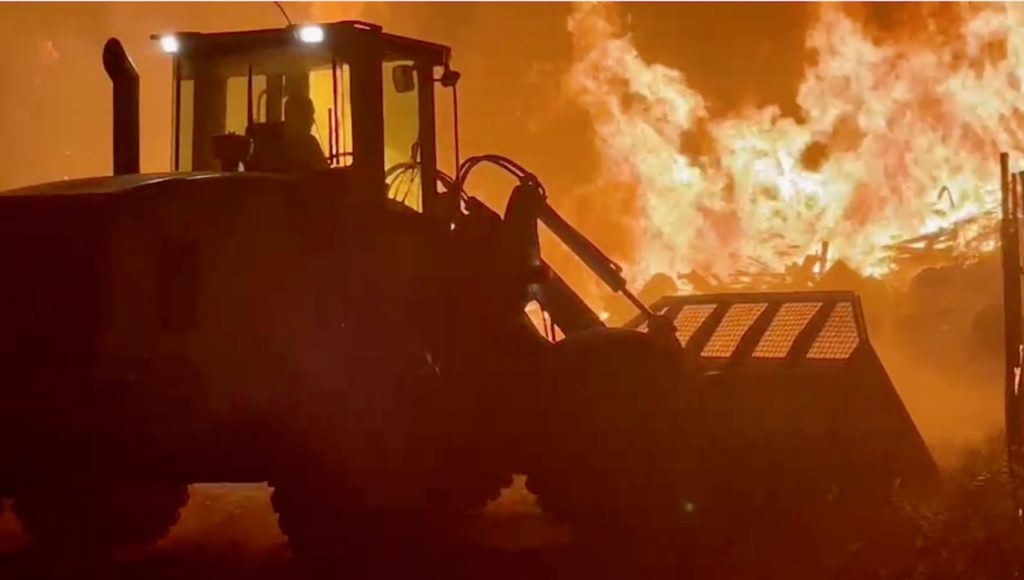
Normally, they operate a marina and sell boats, but this summer they added a new occupation to their resumé, wildfire fighting. The Captain’s Village Marina has been a key North Shuswap business for nearly fifty years and its owner, Dean Acton has long been aware of the need to maintain fire-fighting equipment in case it was needed, including a dump truck with a water tank, pump, and hoses. After the 2021 wildfire season, he added another water truck knowing that it could be sooner rather than later that a wildfire could threaten the North Shuswap. When the Adams Lake East wildfire grew this summer, he purchased three more water tanks and converted trucks adding pumps and hoses.
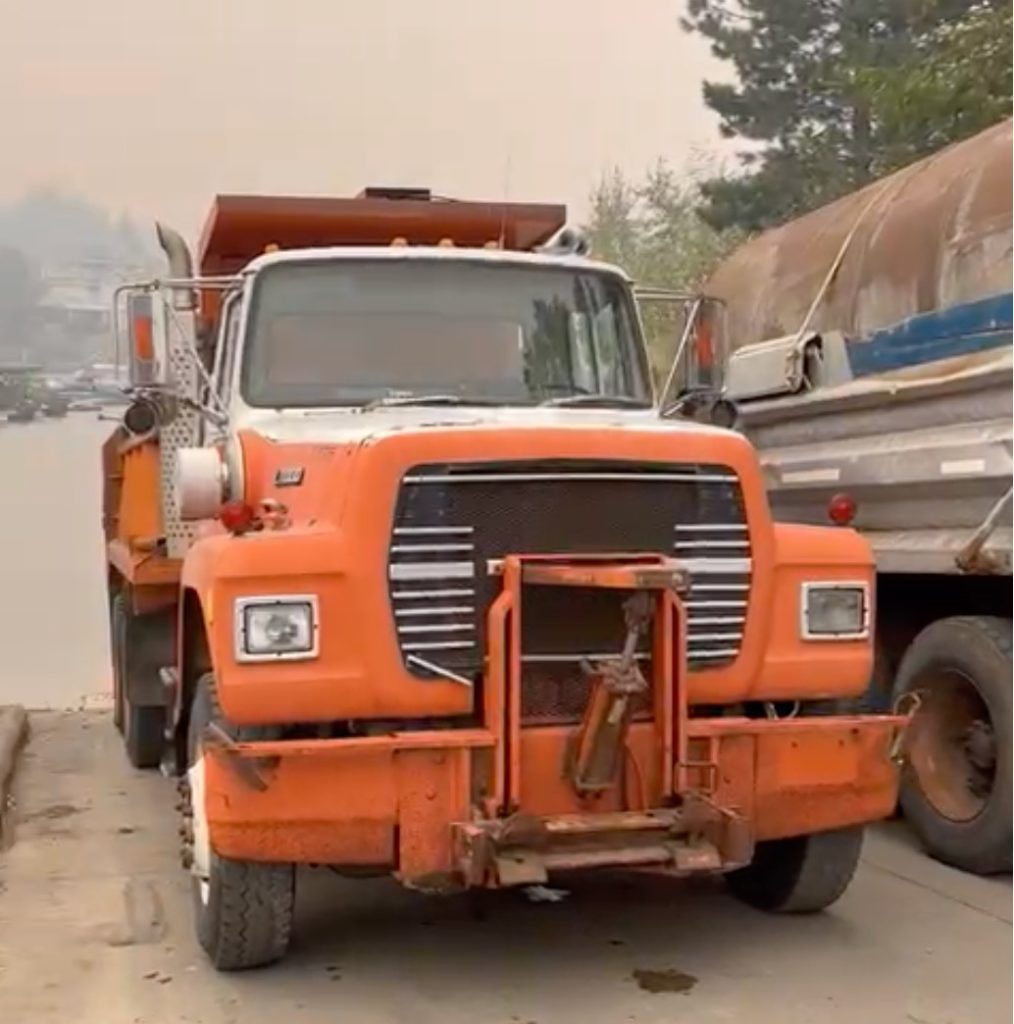
It did not take long until there was a nearby monstrous fire after the BC Wildfire Service (BCWS) did their 10-kilometre-long aerial ignition at 4 pm on August 17th. At 10:30 pm that evening, Dean drove five kilometres up the 670 Scotch Creek forest service road to find that the backburn had escaped and reached the creek. Consequently, he began warning others in the community that the fire was heading towards them.
On the morning of the 18th, Dean’s son Mark drove one of the water trucks up to Meadow Creek, where the fire began burning fiercely only a few hours after the backburn was ignited. He was able to douse many spot fires that threatened properties in the valley, while the fire moved east in the hills above. When he was informed that the fire had emerged in the hills above the Scotch Creek community, he rushed back to take action.
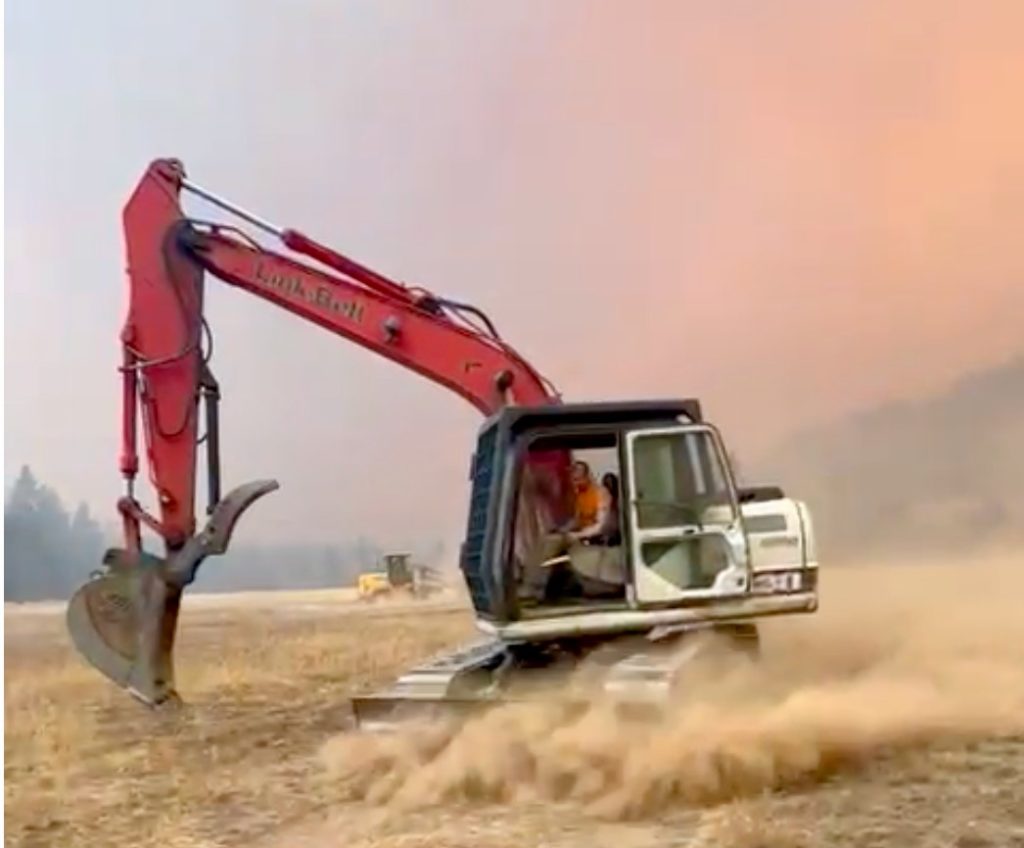
After assembling some heavy equipment, including two loaders and an excavator, Mark, along with other locals, began building a fire guard in the field north of town as an attempt to prevent the fire from moving into the community. Above them was a circling BCWS helicopter that soon landed. When a BCWS “red shirt” emerged, they asked him what the current status of the fire was and what was being done to control it. The red shirt replied that their communication was down, that no control efforts were underway and that he could not help them and then he returned to his helicopter and flew away.

When someone phoned to tell them that the fire had crossed the road near the bridge, they realized that building a guard would be pointless as the fire was on its way. By 5:30 pm the fire had reached the fields west of the marina behind Mark’s and two of neighbours’ homes. At this point in time, the firestorm was in full force, and the air movement was so strong, it sounded like a Boeing 707 preparing for take-off. Trees were candling a mile away as sprinklers they set up to protect their homes shut off along with the power.
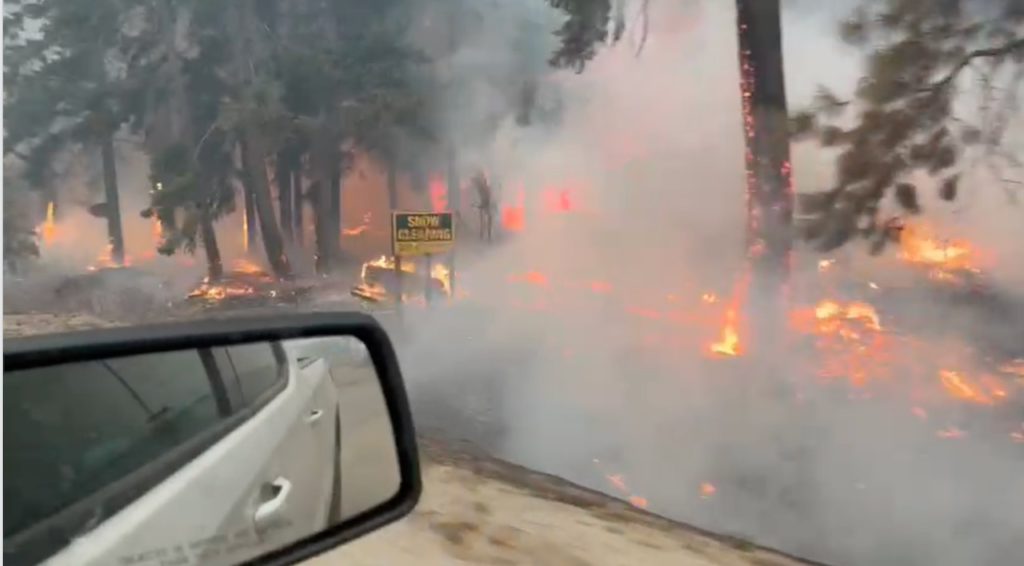
Within a few hours, the North American Log Crafters business caught on fire, and they were forced to retreat to the marina. Soon they returned with loaders and trucks to fight the beast, by scooping up the burning material and pushing the fire back on itself. When they had the fire contained in the log yard, they moved their equipment to the nearby farm where the fire was threatening a large hay barn. Thankfully, they were able to hold the fire back, because if the barn had caught fire, it likely would have spread to all the homes along the waterfront.
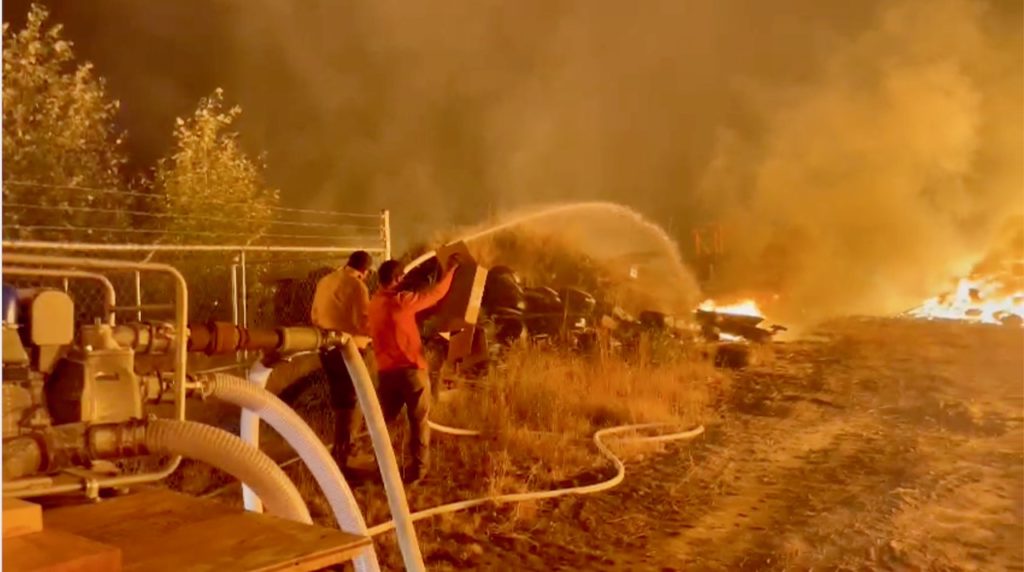
By this point, there were spot fires throughout the community, and the crew worked throughout the night and well into the following day along with other locals to put these fires out. As well, the Captain’s Village water trucks went to other neighbourhoods that day to help fight more spot fires. By noon as more locals began to arrive, Mark and Dean had no idea who was driving the trucks, as they focused on doing the dispatch work and ensuring each truck would get refilled quickly at the marina’s boat launch. Help also came from the South Shuswap, including two eager local firefighters who arrived on Sea Doos well prepared to battle the fires with all their gear.
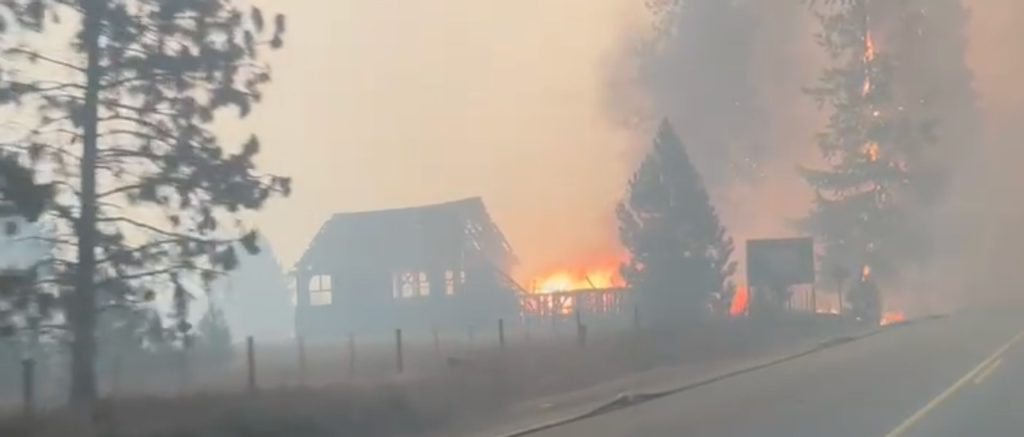
Everything changed on the second day after the firestorm, when the police moved in to restrict travel on the roads and block additional help from arriving, as well as the much needed supplies of food, water, and fuel. Consequently, the Captain’s Village team focused on extinguishing the spot fires in their neighbourhood. Throughout the weeks that followed, they continued to protect their community without any help or collaboration with BCWS and under a constant police presence that only made their efforts more difficult and stressful.
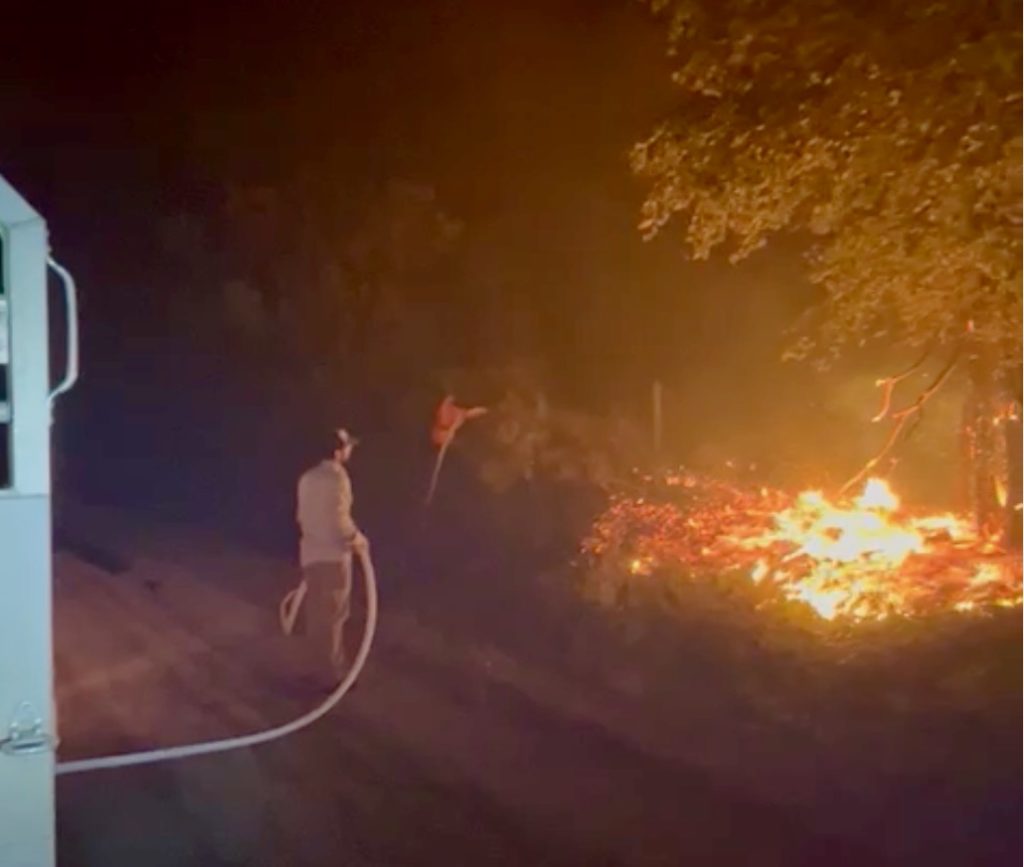
POSTSCRIPT
There is much more to the story, given how Mark and his team were just one of many groups of locals working to control and put out fires during the firestorm and the weeks that followed August 18th. In every neighbourhood from Lee Creek to Magna Bay there were teams of locals who disregarded the evacuation order and stayed to fight the fires, when the BC Wildfire Service red shirts were nowhere to be found. Thanks to these heroes, hundreds of homes and properties were saved, yet the Columbia Shuswap Regional District along with BC government officials and politicians vilified them and called them reckless homeowners who threaten the lives of BCWS personnel who might have to rescue them.
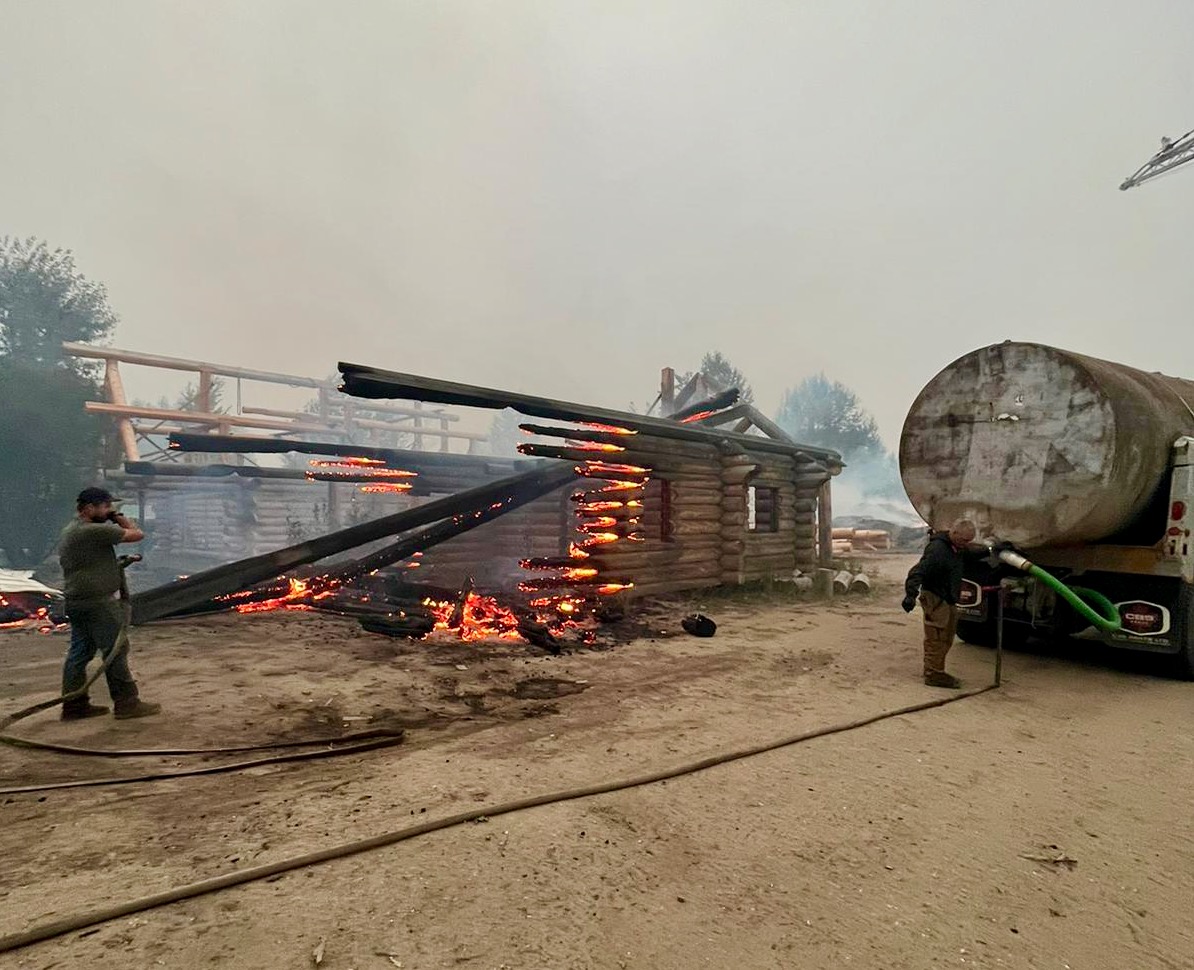
By preventing the fire at the North American Log Crafters from spreading and continuing to put out spot fires, the Captain’s Village team saved much of Scotch Creek, including Caravan’s West. They actioned spot fires along Express Point Road all night long and the next morning they were still putting out fires, including some on Morgan Rd. The first person to show up on the morning of the 19th, was North Shuswap regional district director, Jay Simpson. At this point in the morning, the team had been working steadily without a break for food. He asked how he could help and when he found out they were hungry, he went home where his wife Angela made breakfast sandwiches that he brought back and were devoured quickly.
Another way that the marina helped the community was by providing boats for evacuation, as they had five boats fuelled up with the keys in them in case anyone had to leave. As well, many locals had used the marina to evacuate on the 18th with their own boats. The marina was also a place for boats bringing in supplies to land, until the police began restricting supplies from coming in over the water.
The Scotch Creek volunteer fire department was given orders to evacuate, which they did although the Celista and Anglemont departments remained to fight the fires and help direct people to safety. The Scotch Creek fire department’s water tender was left at the Provincial Park, and locals used it to fill up water tanks left by the BCWS structural protection crews that were used to to fill the hoses going to sprinklers in the Lee Creek neighbourhood.
The eastern part of the Scotch Creek community was protected by a massive water cannon that created a moisture dome that prevented the firestorm from reaching the provincial park, as well as businesses and homes in that area. A private contractor (Fire and Flood) had set up this water cannon, which was attached to a massive pump at the lake, with the hose running underneath the highway in a culvert at the base of Thompson Hill.
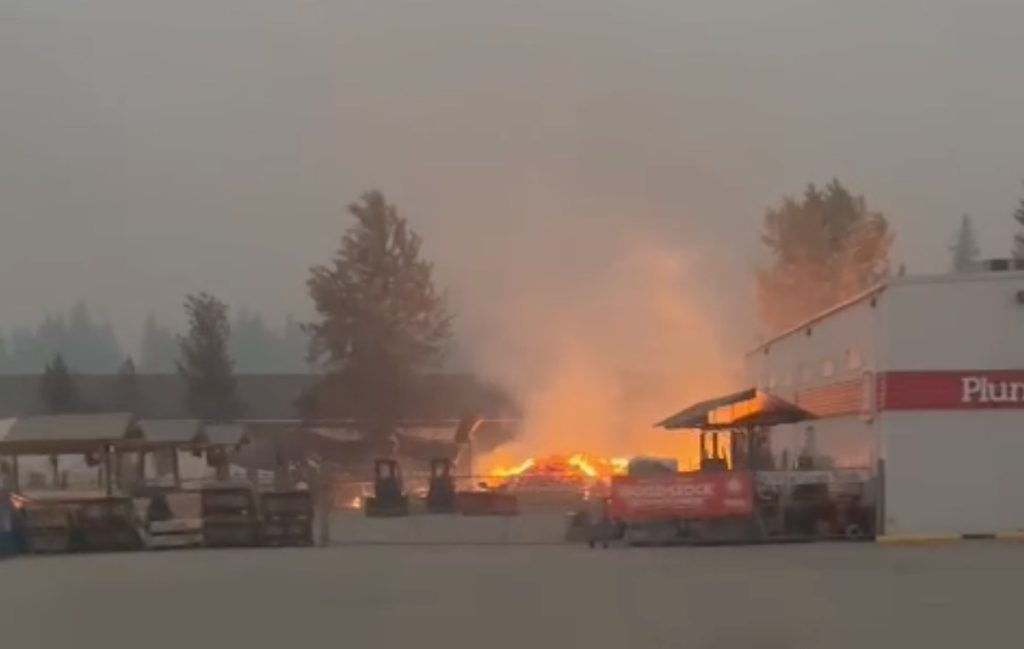
One of the key businesses in the community is the Home Hardware store. When the fire began burning the lumber piles in the yard, there was not much they could do, but it soon threatened the building because it crept underneath the siding at the back. The team had to break through the gate, tear off the siding and douse the studs to prevent the building from burning down.
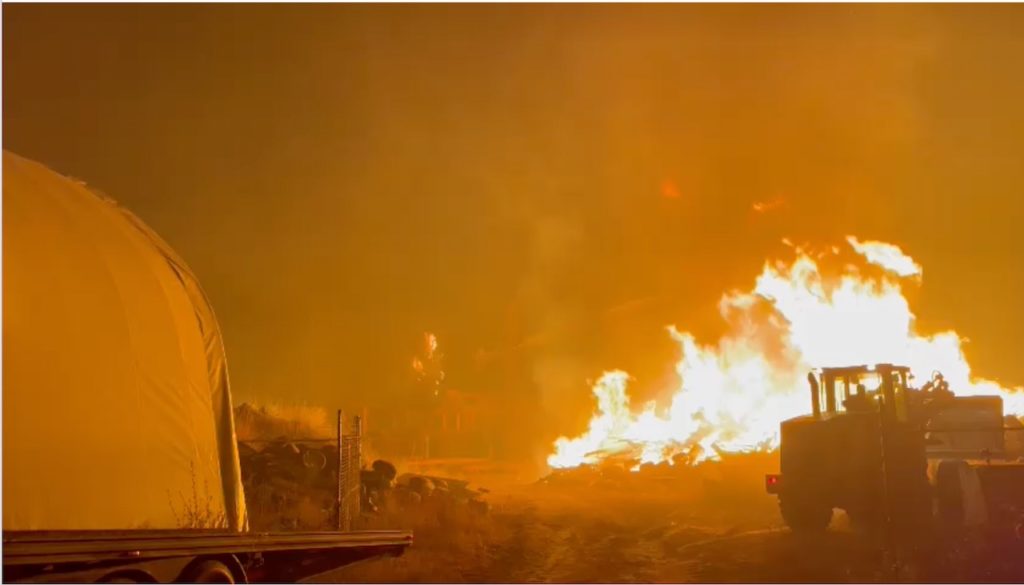
When asked what he learned from the weeks of firefighting, Mark replied that he never wanted to work another day for the BC Wildfire Service. Mark took the course to be able to work legally on the fires, but the one day he went out with the BCWS, they drove by active spot fires that posed threats to the community to do mop-up in an area where there were no flames. He thought a more experienced crew would be tasked with putting out these spot fires, but when they drove back down the road that evening, the spot fires were still active. He realized how the BCWS would waste precious time in the morning for unneeded “safety” meetings and not get to the fires until later in the morning when it was more difficult to put them out. As well, the one event that sticks in his mind was when the red shirt manager emerged from the helicopter to admit he had no idea of what was going on and no plan to fight the wildfire that was quickly advancing towards the communities.
